As the year changed from 2014 to 2015, the Danish sea trout community suddenly started buzzing about squid. And I buzzed along and developed Martin's Mundane Squid, soon to become the Squid Plus Three
Within a few days during December 2014 and the start of January 2015, squid flies were suddenly on everybody's lips in the Danish sea trout anglers' community. People were catching sea trout with small, white, pink and gray squid in their stomachs all over the place, and suddenly everybody wanted to tie a squid fly.
Well, I'm not the one who lets such an entertaining craze slip between my fingers, and one of the Christmas and New Year fly tying sessions was centered around squid.
Now, squid isn't exactly news
around here, even though people acted like it was.
I have caught and kept one fish that had squid in its stomach in my life - and it had one squid and nothing else. That is many years ago, probably like twenty or so. My good friend Henning also immediately remembered a squid eating trout, which he caught a little less than a decade ago.
Squid have also been covered in the Danish sea trout fishing literature, and I have several Danish books on sea trout fishing, which mention squid. Both Michael Jensen's book "Quarry of the sea trout" (Havørredens byttedyr) from 1996 and Thomas Vinges "Sea Trout on the Coast" (Havørred på kysten) from 1999 mention squid in the Danish ocean in detail. Steen Ulnits' more recent Danish book, simply entitled "Sea trout" (Havørred), also mentions squid as a common food item for Danish trout. That was published in 2006.
So Danish squid are old news.
The new thing is that squid are being specifically imitated, which I haven't seen here in Denmark in the thirtysome years that I have been fly-fishing.
The squid bloom
During the he autumn and winter 2014/2015 we saw an unusually large amount of squid in the Danish ocean. Thomas Larsen from the Danish web site www.saltflyfyn.dk (in Danish) contacted the Danish Fjord & Belt Center in Kerteminde on the Danish island Fyn and inquired about the high number. Lars Seidelin, a marine biologist at the center, replied and could tell that the mild winter combined with a high inflow of saltwater from the North Sea had brought in the squid. The sea trout - opportunists as they are - will naturally feed on such an abundant and nutrient rich food source.
In my eyes
people have been fishing squid imitations for quite a while. Look at the Pink Pig and its kin, and it's easy to see the similarity between the large very mobile fly and a small squid. The pig family flies do look more like squid than they do the shrimp, which they are tied to imitate. But that's a whole other story.
I set out tying a squid,
and as it is when I want to tie an imitation, I took a look at the natural. The squid in question is most likely Alloteuthis subulata, the European common squid sometimes also called Loligo subulata. These are small animals in the 10 centimeter or 4 inch range, but they can grow to twice that size. They are typically white, gray or tan with subtle gray, brown or pink markings. They have a long mantle, short arms and very large and pronounced eyes.
They swim in the open water, arms and eyes to the rear, pushed by the jet like propulsion they create by pumping water through the mantel. They are actually quite stiff to look at, undulating the fins or rims they have on the mantle and simply dragging the legs behind them, going in small jerks as they contract their body in pulses.
Their most pronounced feature is the very large eyes located on the rear third of the animal, and the color... or more like the lack of same. It's not the arms, even though you might think so.
We have several squid flies here on the Global FlyFisher already, not least thanks to Pete Gray.
Lots of squid patterns
popped up in the Danish forums, web pages and in Danish fly-fishing Facebook groups, and the squid fever was on. You see just a few on this page.
I decided to challenge myself a bit and make things easy for everybody, and try to keep my squid pattern in my Mundane style as an outset, meaning three materials plus hook and thread.
I dug into the stash and found several useful materials. Since I was going to tie a white fly, white it was. I found a white saddle, white ostrich herl, white dubbing and white fur - both a long haired angora rabbit and some Arctic fox. I decided to go for the white rabbit for the body and mantle and white ostrich herl for the legs. And then eyes of course. All the pictures I found showed very large, brightly white eyes with a black pupil. That I could do with my home made eyes, so they were produced in a suitable number.
I wound up doing it Mundane plus one, because the eyes had to be secured. By using LCR, I could also control the front shape of the mantle with a little resin.
For a hook, the original Mundane dogma prescribes a Kamasan B175 size 6, but for a fly this size that was a little too modest, so I strayed a bit there too, and used a long shank saltwater hook, the classic Mustad 34011 size 1. So it was Mundane plus two.
Lastly the black thread used in the Mundane project didn't suit the all white fly well, and I chose white in stead, and since I had now broken totally with the Mundane oath, the fly changed name from its working title Martin's Mundane Squid to the Squid Plus Three.
Anatomy of a small squid
The squid are typically slender, elongated animals with ten short arms and a large body. Some squid have one pair of extra long arms that they trail behind them when swimming. They swim in smooth jerks, horizontally in quite straight lines with little limb movement, and are very different from the octopuses with their very undulating and organically moving arms. Squid are also pelagic - living in the free water masses - rather than benthic - bottom dwelling, like their eight-armed kindred.
Tying instructions, tube fly
If you tie on a hook, you simply start at step 12 and tie on from there. Select a fairly long shanked hook.
|
|
|
|
|
|
|
|
|
|
|
|
|
|
|
|
|
|
|
|
|
|
|
|
|
|
|
|
|
|
|
|
|
|
|
|
|
|
|
|
|
|
|
|
|
|
|
|
|
|
You can of course
vary the fly by changing the colors. Keep them light - tan or gray will work, even light olive or pink. You can also just add a bit of color. Mix some pink or tan fur into the body dubbing and the mantle or use a marker to add a few colored specks to the mantle and arms. You can also use grizzly hackle for the arms and barred or speckled fur for the mantle.
Another variation is to tie in two of the arms long - as long as the rest of the animal. Many squid have these two extra long arms.
The Squid Plus Four
is another variation, tied on a tube. The thing is that a 10 centimeter fly requires quite a large hook, and by transferring the fly to a tube, you can reduce weight and use a much smaller hook, which can be desirable if you want to make a large fly that's still easy to cast.
Use a plastic tube for a light fly and a metal tube (like stainless steel) for a heavy one. The heavier and larger fly will require a sturdy rod to cast, but can also be fished trolling or on a sinking line
The thin metal tubes are available from Canadian Tube Flies.
- Log in to post comments

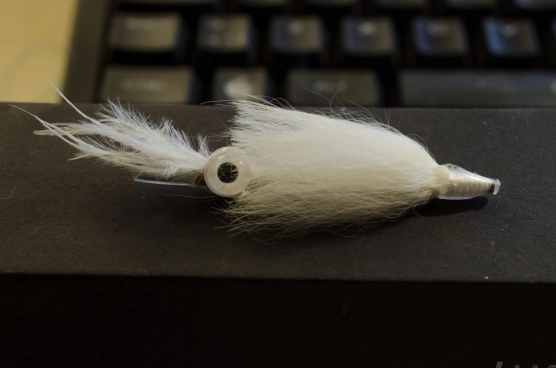
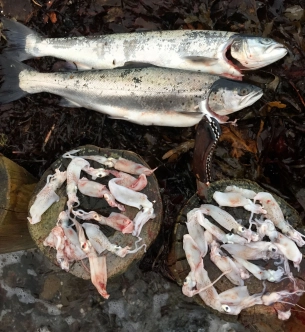
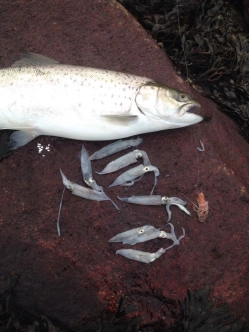
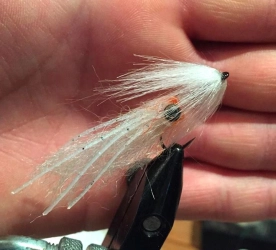
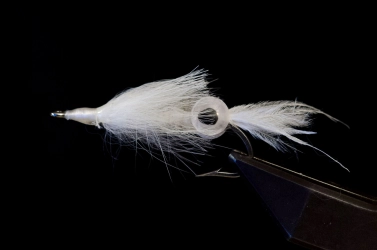
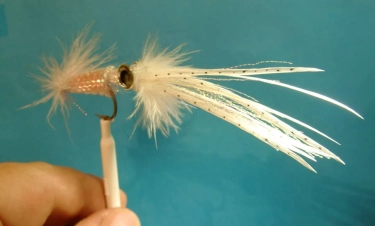
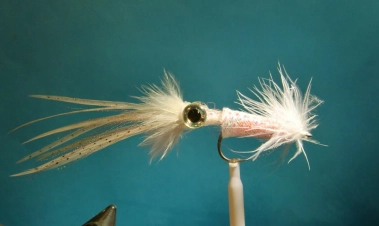
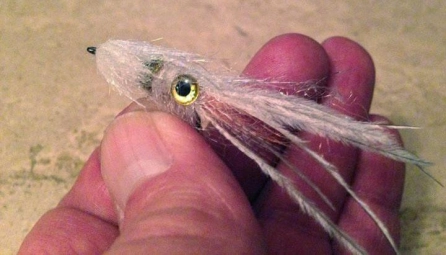
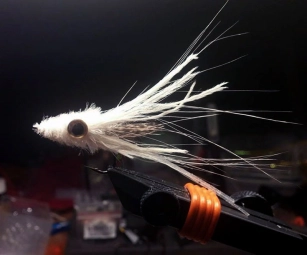
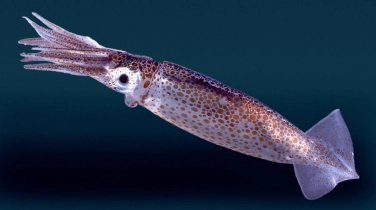
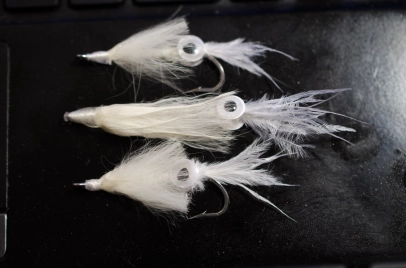
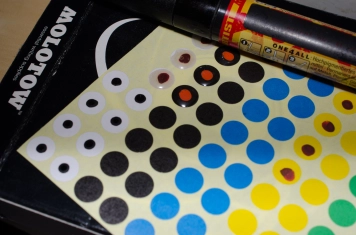
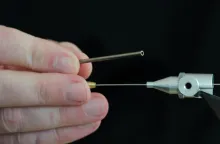


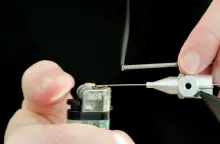
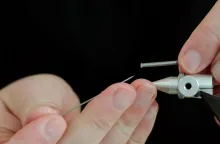
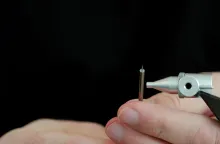
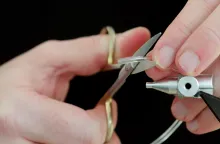
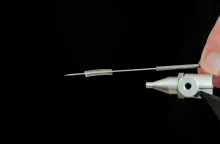
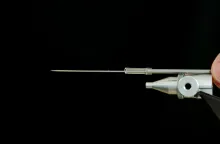
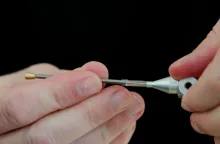
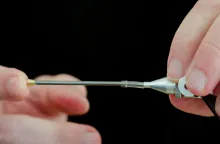
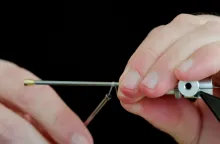
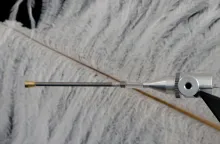

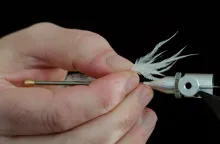
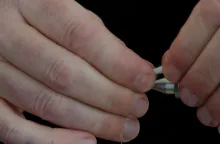
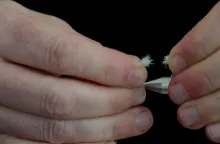
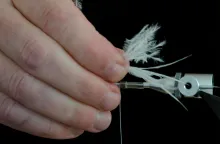
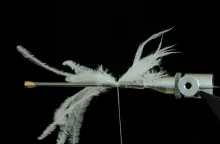
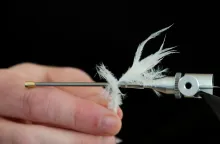
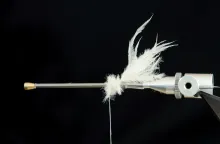
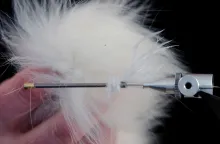
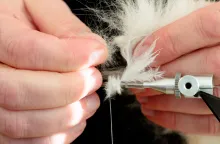
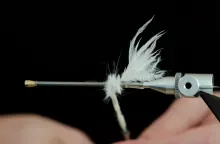
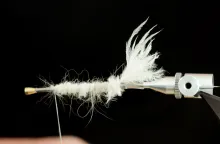
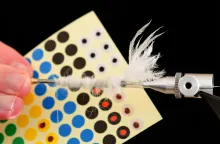
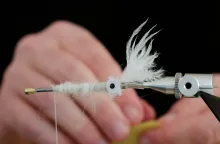
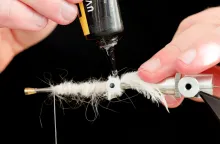
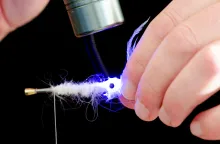
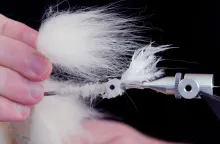
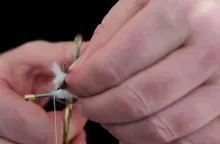
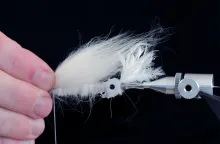
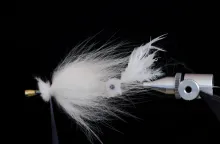
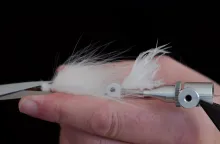
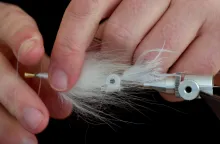
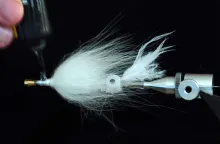
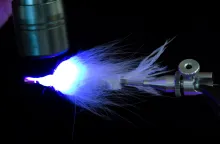
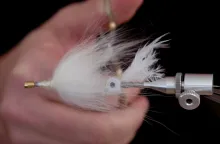
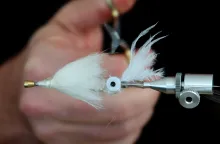
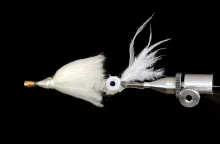
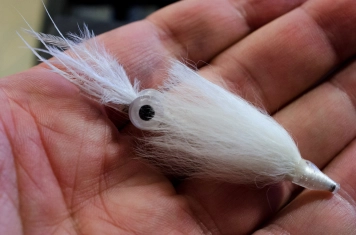
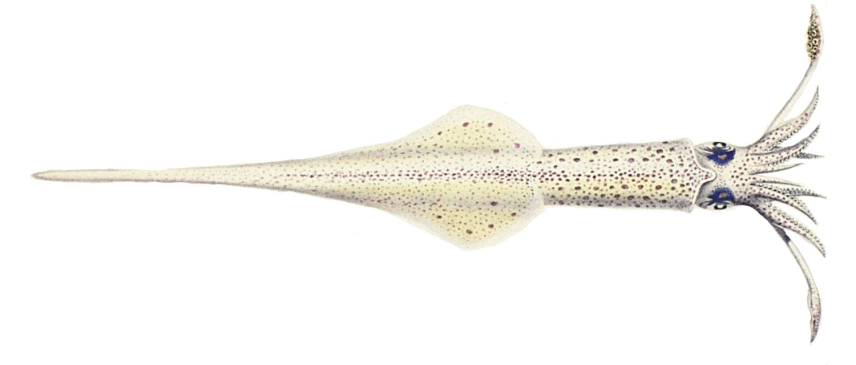
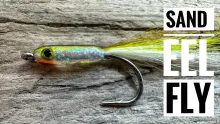


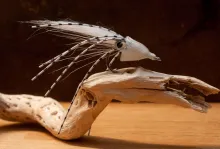

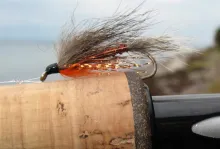

Great post
Great post. I like the pattern; the best take away is the proportion information - short arms, long body. We have (cutthroat) trout eating squid here in the Puget Sound. I believe the squid (and the trout) are smaller than yours, but great fishing on light weight rods..
Nice squid tube fly
Martin, very nice Squid tube fly. I see you haven't lost your touch. Amazing what a trout will eat. Best regards.
Richard